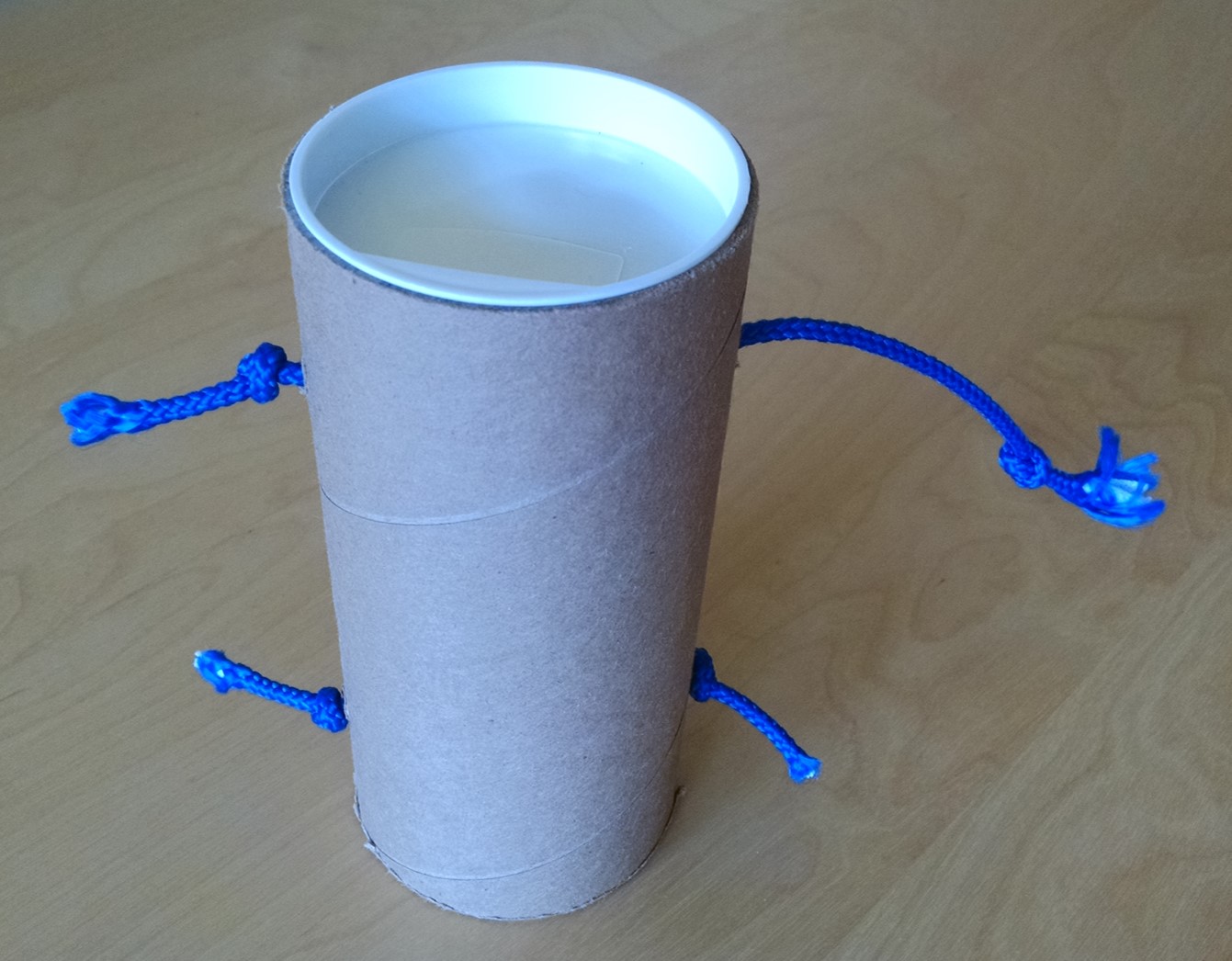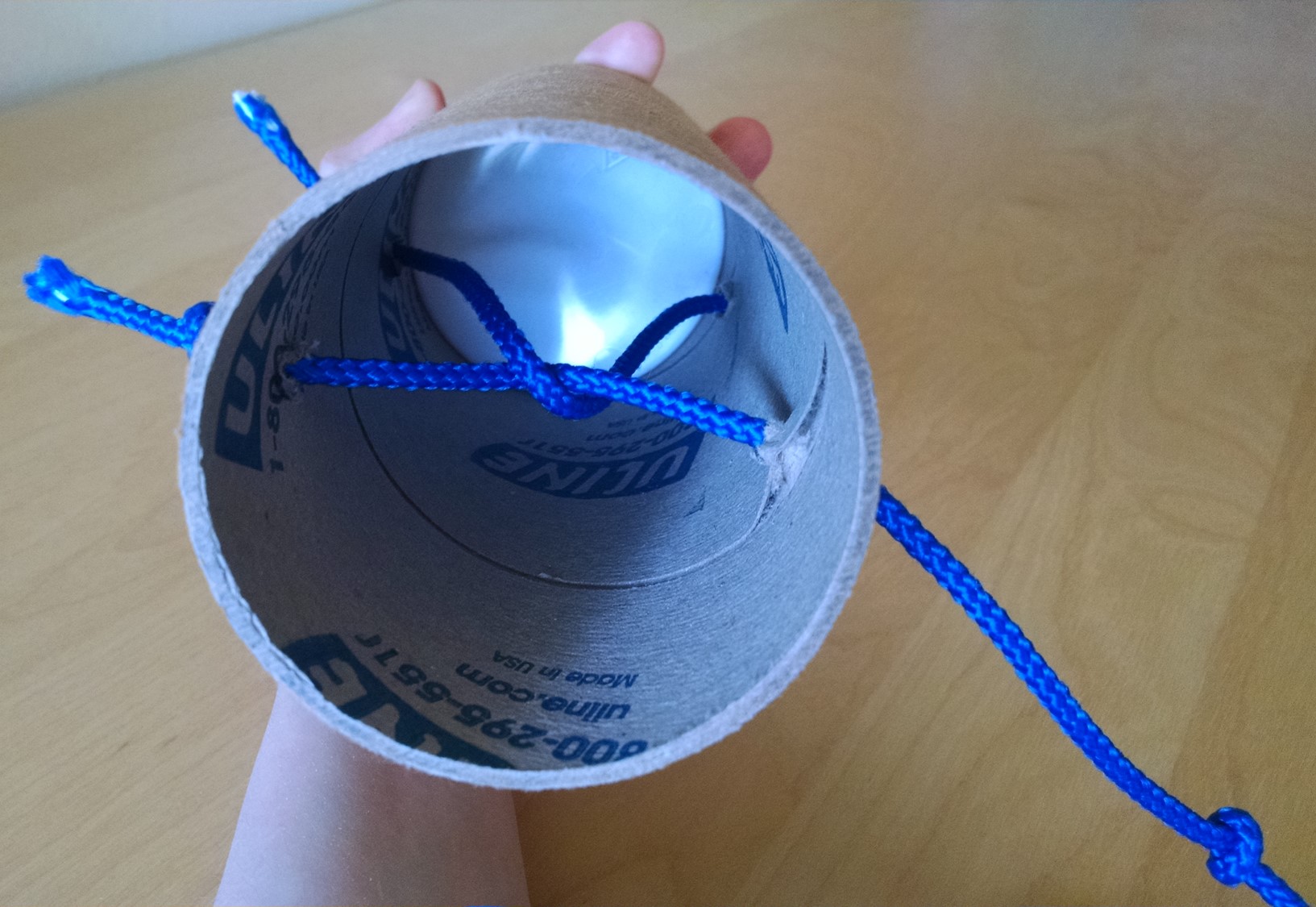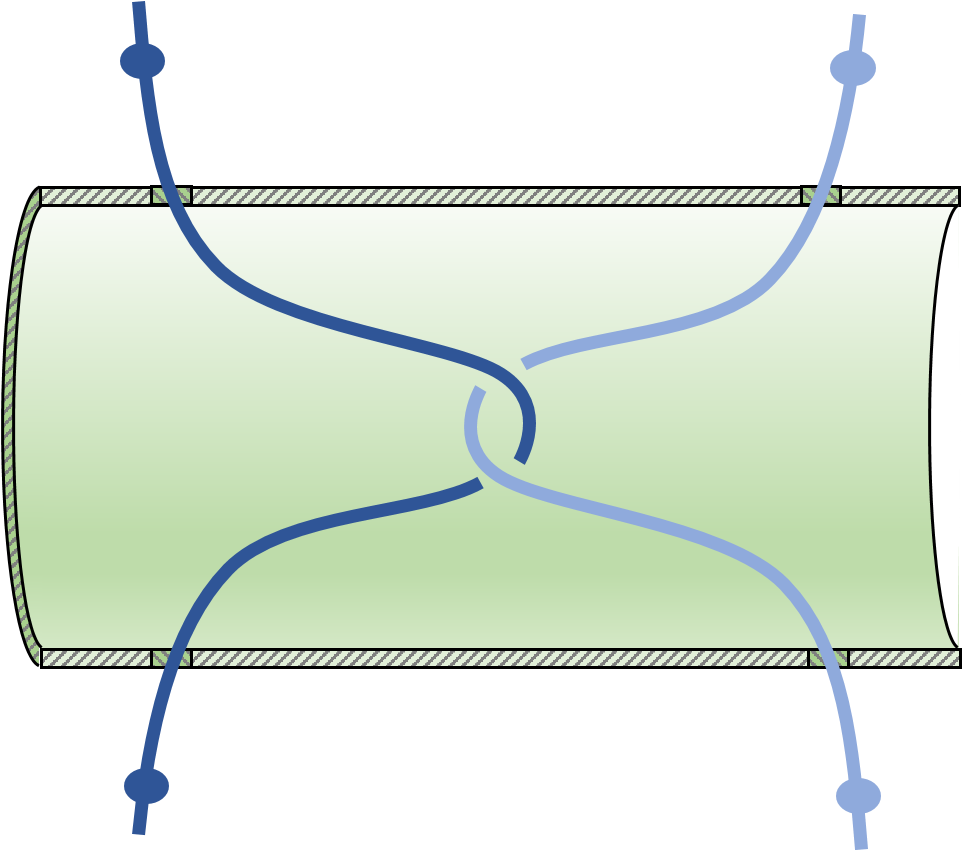Mystery Tubes Revealed
Click here to see mystery tubes in action.


Mystery tubes are straightforward and inexpensive to make, composed of a capped tube and two cords. Each cord is threaded through two holes that are radially opposite each other on the curved face of the tube. Inside the tube, the two cords are hooked around each other.
To make my tubes, I used cardboard poster tubes with a diameter of about 3 inches, which I cut into 7 inch long cylinder pieces using a table saw.
I was able to achieve reasonably clean holes in the cardboard by using a drill press pulled down very slowly. I placed each hole 1.5 inches from the tube’s ends. For the cords, I scavenged something like paracord. I made ten mystery tubes for a class of about twenty people.

The poster tubes worked very well because they were sturdy yet lightweight, but there are many ways to make mystery tubes; plus, it’s easy to pop the endcaps off and on. PVC pipes, toilet paper rolls, or even rolled up paper could be used. For the cords, any kind of thick yarn or string would work just fine. It’s best to have neatly cut holes so the cords don’t catch when they’re pulled.
I knotted the cords so that whenever one free cord is pulled, all the other cords can be retracted all the way to their knots. Ultimately, you want each cord to have a length a little bit less than twice the distance between the hole pairs along the tube’s length.
To assemble the tubes, I threaded the first cord through both of its two holes, then knotted it on one side. I knotted one side of the second cord, then threaded its unknotted end through one hole. I looped the second cord around the first, then threaded it through its second hole. I pulled the second cord until its knot caught, to retract the first cord. I pulled the first cord back out a little bit, and then knotted it, so that the length between the two knots was a little bit less than twice the axial distance between the hole pairs. I then pulled on the first cord to retract the second cord almost all the way, and knotted the remaining end of the second cord. Getting the cord length right ensures that pulling a knot on one end of the tube will fully retract the cord on the other end, which supports the illusion that any of the cords could be attached to each other.